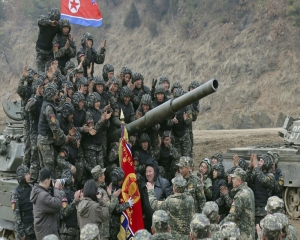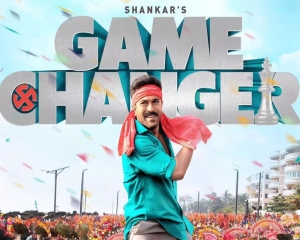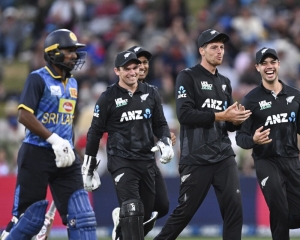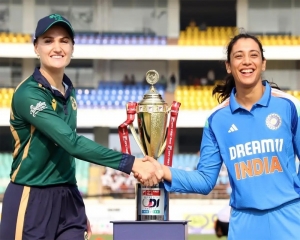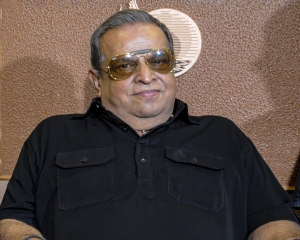Unlike many Indian nationals who refuse to acknowledge their Indian ancestry, Roma community members worldwide have always been proud of their Indian origins and linguistic and cultural affinity with their mother country. We need to care for them
Inaugurating the three-day International Roma Conference and Cultural Festival 2016 in New Delhi on Friday, Union Minister for External Affairs Sushma Swaraj described the people of the Roma community spread across various parts of the world as children of India, who migrated and lived in challenging circumstances in foreign lands for centuries while retaining their Indian identity.
Asserting that there was credible evidence which indicated the migration of the Roma community from India towards the West in the fifth century, she said, “We Indians are proud of the progress and name that the Roma community has made for itself at the local and international level. More significantly so, because the process of adaptation, diffusion and progress was based on Indian value systems of peaceful co-existence, respecting other cultures and contributing towards growth. Roma maintained Indian traditions in the countries that were unaware of India, and its culture and traditions.”
Thirty-three scholars and 12 cultural performers from 12 countries, apart from 15 Indian scholars, attended the three-day event organised by the Indian Council for Cultural Relations and the Antar-Rashtriya Sahayog Parishad-Bharat.
There is an estimated population of at least 20 million Romas worldwide. The largest population of Romas is found in the Balkan peninsula while a sizeable number exists in the Americas, the former Soviet Union, West Asia and North Africa. In Romania and Bulgaria, the community forms 12 per cent of their total population. In Turkey, it has a population of 2.75 million, and has significance presence in Russia, Slovakia, Hungry, Serbia, Spain and France.
Romas are believed to be descendants of nomadic groups from north-west India, like Dom, Banjara, Gujjar, Sansi, Chauhan, Sikligar, Dhangar. They are known differently as Tsigan in Russia, Bulgaria and Romania, Gitano in Spain, Tshingan in Turkey and Greece, Zigeuner in Germany, Tsyiganes or Manus in France, Tatara in Sweden, and Gypsies in Great Britain.
Both linguistic evidence and genetic information have confirmed the Indian origin of the Romas. In 1782, Johann Christian Christoph Rudiger published his research that pointed out the relationship between the Romani language and Hindustani. Subsequent studies have supported the hypothesis that Romani shared a common origin with the Indo-Aryan languages of Northern India.
Further evidence for the Indian origin of the Romas came in the late 1990s when it was discovered that Roma populations carried large frequencies of particular Y chromosomes (inherited paternally) and mitochondrial DNA (inherited maternally) that otherwise exist only in populations from South Asia.
While the exact cause of the Roma migration from India has not yet been established, the most probable conclusion is that the Romas were part of the military in northern India. When there were repeated raids by Mahmud of Ghazni and these soldiers were defeated, they moved West with their families into the Byzantine empire. However, some scholars are of the view that the first wave of migration took place when Alexander took blacksmiths from India to make weapons.
Many historians also believe that the Muslim conquerors of northern India took the Romas as slaves and marched them home over the difficult terrain of Central Asia, taking a heavy toll on them and consequently giving rise to naming of mountains such as Hindu Kush (slaughter of Hindus). Mahmud of Ghazni reportedly took 5,00,000 prisoners during his invasion of Punjab and Sindh. There are also historians who hold the view that the Romas were originally low-caste Hindus recruited into an army of mercenaries, granted warrior caste status and sent westward to resist Islamic
military expansion. Though most of the Romas outside India have converted either to Christianity or Islam, their social behaviour even today is strictly regulated by Hindu purity laws.
According to ICCR president lokesh Chandra, the Roma community has made an immense contribution to building london which is counted among the most developed and amazingly planned modern cities. “Romas have been a community of craftsmen. They have been ironsmiths, coppersmiths who were living on the outskirts of the habitations. They made weapons for the state of Hungary in the 15th century during the reign of King Ulaszlo II and were close to royalty in those times. They were also primary contributors to building the topmost cities of the world.”
Though Ms Swaraj in her address said that the Romas were “the perfect example of peaceful co-existence in multicultural societies”, the fact remains that they have been at the receiving end of racist violence, particularly in European countries.
Unfortunately, till the previous Government was in power, India chose to remain a mute spectator to these incidents. Unlike many Indian nationals who refuse to acknowledge their Indian ancestry, the Romas have always been proud of their Indian origins and linguistic and cultural affinity with their mother country. With a view to removing negative perceptions about itself in Europe and other parts of the world, the Romas now want India to accept them as their diaspora and as a linguistic and cultural minority. In the words of Joval Damjanovic, the Serbia-based president of the World Roma Organisation Rromanipen “Romas are the indigenous people of India. There are many scholars and researchers who trace our origins to India. We use same Indian words and we want India to accept us as their diaspora and give us nationality.”
According to him, accepting the origins of the 20 million Romani people can provide India a boost at the political, economic and cultural levels globally.
While it is laudable that the External Affairs Minister has called for further augmenting and continuing efforts for in-depth research into the history of Romas and preservation and documentation of their precious heritage and relations with India, New Delhi should proactively exert pressure on the European Union to ensure that the Romas enjoy the same rights and protection against discrimination like other European citizens.
It is important that the Romas with their sizeable populations are utilised as influencers in their respective countries to mould both public opinion and policies towards India. Unlike the non-resident Indian community, which is deeply divided on casteist, religious and linguistic lines, the Romas can emerge as India’s ambassadors at large in Western capitals, much like the powerful Jewish lobbies are for Israel.
The External Affairs Ministry should set up a Roma cell which must coordinate with Indian missions abroad to facilitate healthy interactions with these lost tribes of India.
(The author is a senior journalist and commentator)

















